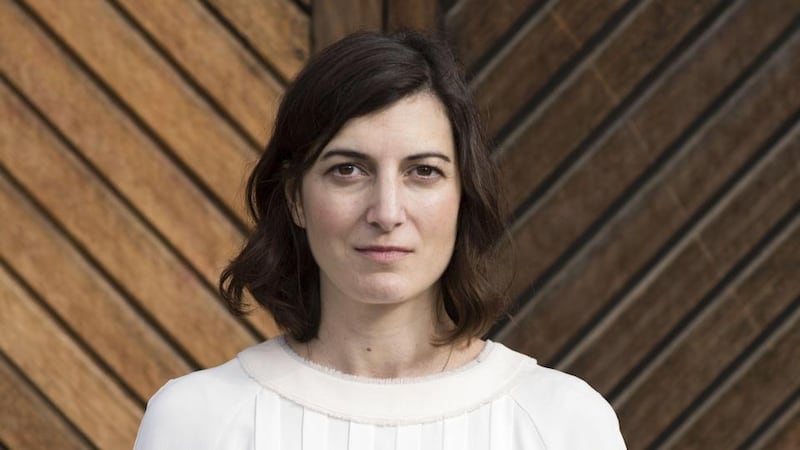Why be happy when you could be normal? It's a great question and an even better title, as chosen by Jeanette Winterson for her acclaimed memoir on growing up gay in the household of a controlling, Bible-bashing mother.The same question comes shouting from the pages of Paula Cocozza's brilliant debut novel, a beguiling, highly inventive story about loneliness and finding a place in the world.
How to Be Human captivates from an opening sequence that sees a baby left on a doorstep: "A sliver of palm was streaked with shimmers of purple and blue, veins rubbed with moonlight." The doorstep belongs to Mary, an offbeat, mid-30s narrator who has recently separated from her domineering fiance Mark.
Over the course of a claustrophobic east London summer, Cocozza follows Mary as she attempts to put her life back together and embark on a new relationship. You know how it goes: the first shy glances across a sun-soaked garden, the tentative approach, the build towards physical contact, the grand dinners meant to impress. Mary’s reawakening has all the hallmarks of a classic romance, except for the fact that her new fella is a fox.

What begins as mutual admiration in her back garden leads to eventual cohabitation as Mary pits Fox and herself against the outside world. Fox is everything Mary has wanted in a man. Unlike her ex, he is polite, humble and a great listener.
She is at once a wounded soul who has cut herself off from family and friends, and a borderline sociopath who doesn't care about the safety of a newborn as a wild animal prowls the neighbourhood.
A disturbing humour underpins Mary’s voice, a mesmerising mix of delusion and discernment: “The distinctive manner of his exit – his ease over the wall, his readiness to oblige her by leaving – made it clear that his departure was not an expression of compliance but of hospitality.” There is something beautifully simple about her new relationship: “He was her friend. He alone knew that she was not so strange”.
The tension in Mary’s character drives the novel. She is at once a wounded soul who has cut herself off from family and friends, and a borderline sociopath who doesn’t care about the safety of a newborn as a wild animal prowls the neighbourhood. Cocozza is a master of ambivalence. Is Mary crazy or just desperate for company? Will Fox save her or cause a breakdown? Is he a wild predator, or actually, compared to the cracking cast of flawed human characters, an ideal partner?
The plot centres on relatively little action – babysitting, Mark’s attempts to win Mary back, fraught interactions with neighbours, a hilariously debauched barbecue. The momentum is achieved through Cocozza’s edgy, atmospheric writing.
A feature writer at the Guardian, Cocozza has an MA in creative writing from the University of East Anglia and was the 2013/14 recipient of the David Higham Award. Her debut summons up the razor-sharp domestic portrayals in the works of Helen Simpson and Jennie Offill. Elizabeth McKenzie's recent debut The Portable Veblen also comes to mind, with both novels' eccentric narrators seeking surreal solutions to real-life relationship problems.
The magazines were full of stories of women choosing between their career and their maternal instincts. But what if you had neither?"
In How to Be Human, Mary's sardonic voice is used to great effect when commenting on relationships and family. Observing her neighbours, Eric and postnatally depressed Michelle, with their newborn daughter, Mary notes that there are "few species as fast as a parent with a babysitter". On being single: "Too much time to think about yourself. The world shrunk to fit." On indecision about motherhood: "The magazines were full of stories of women choosing between their career and their maternal instincts. But what if you had neither?"
Cocozza has the writer’s keen eye for detail, noticing that a baby’s calf is the perfect size for “a human stress ball”, or that Mark’s eyes are “cold as blades” on the day of their final fight. But where the book really excels is in her humanisation of Fox. From Mary’s belief that the animal is flirting – “He had winked at her!” – to her vivid descriptions of his coat and muzzle, the blurring of the animal and human worlds is seamless.
Fox is also allowed a voice at times, a cleverly stylised creation that is at once convincing and comic: “She smelt of warmed milk – three canteen lattes a day – cut with rose soap . . . Salty snail odour tunnelled into his muzzle. From the fresh male who was an old male who was a slithery male.”
While Fox becomes more human, Mary begins to view her house, garden, neighbours and even sex with her ex in animalistic terms. It is a fitting reversal for a woman who is questioning what it means to live and function as a normal human being in a normal society.
There is the sense that Cocozza believes no such neatness exists. In the words of a kindly environmentalist, Mary lives in “a wilderness right next to civilisation. You’re basically living on the line between the two.”












